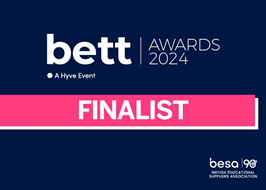A level
At the moment Time2Code does not cover object-oriented programming or working with graphical interfaces that are required for A level. However, it is still perfect for learning and revising core programming principles that are still required for examinations and the NEA.
Some students studying A level Computer science may not have studied the subject at GCSE level. That means their only experience of programming will have been at Key Stage 3 at best. They will have a steep learning curve to attain A level standard quickly. This scheme provides the perfect learning journey for those students. Even students that did study GCSE Computer Science may lack confidence with programming. This scheme provides excellent revision for those students too.
Using the same programming language at A level
If your students followed our suggested approach at GCSE, this would mean they did not complete all the programs in every level because they were only aiming to achieve four or six stars. They only completed a quarter or half the programs in the Time2Code scheme. At A level they can go back and have a go at the other programs they skipped, trying to complete them all.
Starting a new language at A level
Alternatively, if students studied Python for GCSE they could start Time2Code again in C# or vice versa. This is particularly useful for students that are wanting to study Computer Science beyond A level as they get to see how the two languages are similar but different.
Going beyond Time2Code
Our suggestion is to use Time2Code between September and February half term of year 12. After that switch to other projects, for example the algorithms listed below and/or games design in preparation for the NEA. Craig'n'Dave produce resources for games design in Lua using the Defold IDE and engine.
Algorithms
You can use Time2Code as a springboard to teach the more advanced algorithms below. Check the specification your students are following to know which data structures and algorithms are relevant.
After level 5 students have the knowledge to code the data structures:
- Stack: push, pop, peek operations.
- Circular queue: enqueue, dequeue operations.
- Hashing and hash tables.
- Students could explore algorithms such as the "shunting yard" to put the data structures into context.
After level 6 students have the knowledge to code the searching algorithms:
- Linear search.
- Binary search.
- It would be an excellent exercise for students to write both algorithms and then compare their performance with small and large data sets.
- They can also code linked lists.
After level 6 students have the knowledge to code the sorting algorithms:
- Bubble sort.
- Insertion sort.
After level 6 students have the knowledge to code pathfinding algorithms:
- Dijkstra's algorithm.
- A* algorithm.
